By: Bethany Wight, Biologist
UF/IFAS Range Cattle Research and Education Center
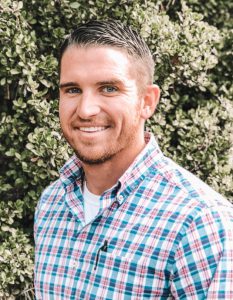
Clay Cooper first grew up in Crystal River and moved to Lecanto during middle school. He spent his summers at his grandparents place on Kings Bay and enjoyed fishing and being on the water. When his family moved to Lecanto they acquired some land and he began showing livestock at the county fair and soon shows across the state. Eventually his father and he started their own herd of cattle. When he wasn’t working with cattle Clay enjoyed playing baseball, hunting and fishing.
“My dad and I started with a cow calf pair, a bred heifer and a show steer. We then got into conducting some AI work and the herd grew from there”
Clay attended the College of Central Florida in Ocala, FL and graduated with a Bachelor of Science in Agribusiness in 2016. While he was getting his bachelor’s degree Clay worked at Publix, operated a feed store, and continued working on his family cattle. Near the end of his degree he noticed a position posted for a UF/IFAS Extension program assistant in Citrus County. Citrus County had been looking for a full time extension agent for a while but had difficulty filling the position so they changed it to a program assistant position. Clay applied and got the position in 2015 while finishing his bachelor’s degree. He quickly filled in the role focusing on commercial agricultural producers, cow/calf operations, produce production and forage management. This included soil sampling, forage production assessments, weed identification and control and advice on livestock production, specifically emphasizing better management practices to improve production efficiencies. Soon after Clay graduated they re-opened the position as a full-time extension agent and he got the position. As Clay transferred into this full extension agent position most of his job duties remained the same but he was also tasked with the assisting in natural resources. This led him to get more involved in wildlife management, invasive species control and efforts to reduce water usage and improve water use efficiencies on agricultural lands.
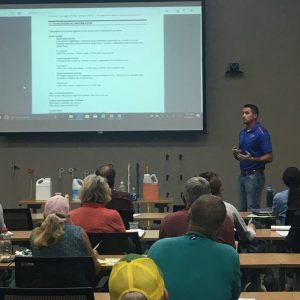
To maintain his position as a UF/IFAS Extension Agent for Citrus County, Clay needed to earn his Master’s degree. Clay had worked with Dr. Sellers previously on weed identification and management. While visiting the RCREC one day for an event he ended up sitting next to Dr. Sellers and they began discussing different program opportunities for a master’s degree at the center. Shortly after, Dr. Sellers attended a pasture management program Clay was hosting and they talked more about major weeds affecting Florida cattleman. Clay had recently met with some local cattleman and they communicated that they were having big issues with a weed called brunswickgrass, also referred to as brown seeded paspalum.
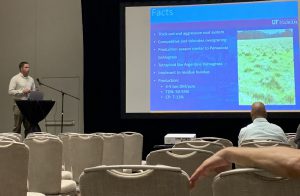
“Due to its physical characteristics brunswickgrass is highly competitive with both bahiagrass and bermudagrass. When the plant is young it may be grazed by livestock, but as it matures it quickly becomes rank and begins to lose its palatability, causing livestock to avoid grazing it. This distinctive trait in addition to the plants extensive rhizome system, gives it a competitive advantage in our summer perennial pastures and often times leads to it out performing desired forages, especially when overgrazed.”
At the time there was little to no data on how to manage this weed in pastures. Dr. Sellers came for a site visit near Clay and saw how big of a problem brunswickgrass was to bahiagrass pastures and livestock producers. Clay and Dr. Sellers came to the conclusion that data needed to be collected on this pasture weed and it would be fitting for a master’s research project. Clay started as a master’s student under Dr. Sellers in the fall of 2018.
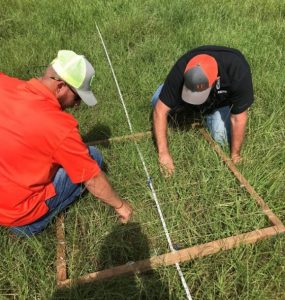
Clay’s research will focus on investigating management strategies for controlling brunswickgrass in bahiagrass seed production fields in Florida. He will be conducting trials examining annual forage rotations, herbicide titrations, application timings and the impacts of rainfall. The annual forage rotation part involved applying glyphosate to a study pasture and then prepping and planting warm season annuals to see if they could hold back brunswickcgrass regeneration. After the forage rotation study, a local producer contacted Clay about using hexazinone to control smutgrass and seeing an impact on brunswickgrass. So Dr. Sellers and Clay decided to see if and at what application rate hexazinone would provide adequate control of brunswickgrass. They applied hexazinone at ½, 1, 2, 3, and 4 pints to see what rate was effective at controlling brunswickgrass. They also wanted to examine the timing of applications using hexazinone, as commercial applications were applied in April and by mid-Summer showed significant regeneration. They tried applications later in the year, May-September and attempted to narrow down the application rate and time of application monthly to find the most effective treatment. From seeing better results of hexazinone application later in the season they also chose to conduct a rainfall stimulation study to assess what affect rainfall had on treatment.
“I think that answering some of these key questions for brunswickgrass control will be critical for the development of control strategies in Florida pastures”
When Clay is not working as an extension agent he still enjoys hunting, fishing and just about anything outdoors. Clay plans to graduate in 2021.
“I would like to continue my career within extension or possibly consider a job within industry. The more exposure I get in the weed sciences sector, the more opportunities I see and it is early in my career so I want to keep my options open. Ideally something that combines research, field studies, and extension would be right up my alley.”
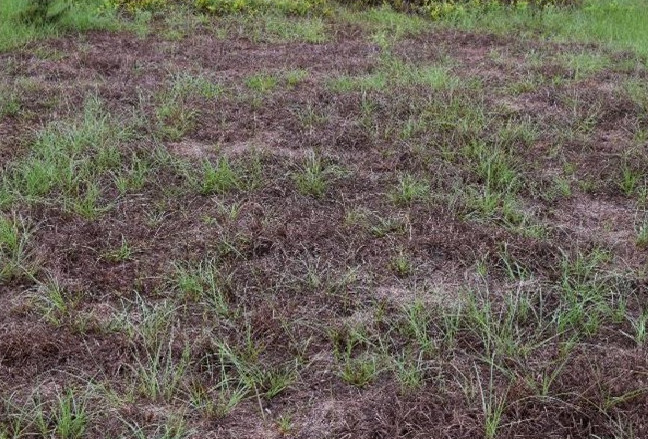
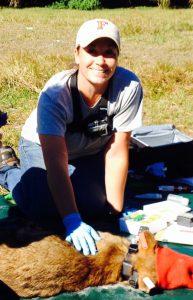
This was written by Bethany Wight, a biological scientist at the UF/IFAS Range Cattle REC in Ona, FL. If you have questions please contact her at bwight@ufl.edu.
 0
0
